Related Research Articles

The units of the British Army are commanded by the Chief of the General Staff. This is broadly similar to the structures of the Royal Navy and Royal Air Force, in that the four-star (general-equivalent) commanders-in-chief have been eliminated since 2011 and service chiefs are given direct command of their respective services and are responsible as Top Level Budget (TLB) holders. Army Headquarters is located in Andover, Hampshire. There is a Commander Field Army and a personnel and UK operations command, Home Command.
Options for Change was a restructuring of the British Armed Forces in summer 1990 after the end of the Cold War.

The Adjutant General's Corps is a corps in the British Army responsible for many of its general administrative services. As of 2002, the AGC had a staff of 7,000 people.
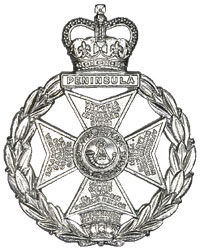
The Royal Green Jackets (RGJ) was an infantry regiment of the British Army, one of two "large regiments" within the Light Division.
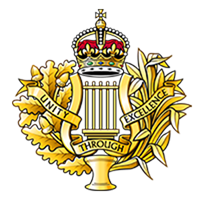
The Royal Corps of Army Music is a Corps of the British Army dedicated to the provision and promotion of military music.

The King's Royal Hussars (KRH) is a Royal Armoured Corps regiment of the British Army formed in 1992. Based at Tidworth it serves as the armoured regiment of the 12th Armoured Infantry Brigade. Under Army 2020 Refine, it is intended to exchange its Challenger 2 tanks for Ajax vehicles.
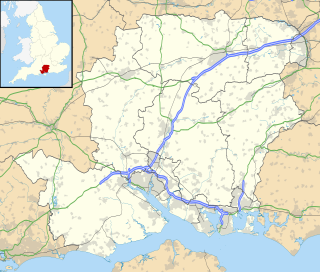
The Royal Green Jackets (Rifles) Museum is situated at Peninsula Barracks in Winchester, England. The museum is one of several regimental museums that form part of Winchester's Military Museums.
The 1st Green Jackets was an infantry regiment of the British Army that existed from 1958 to 1966. The regiment served in the Cyprus Emergency, Brunei Revolt, Indonesia-Malaysia confrontation and West Berlin. The regiment formed part of the Green Jackets Brigade and in 1963 was redesignated as a rifle regiment.
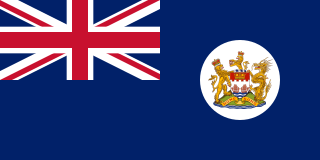
British Forces Overseas Hong Kong comprised the elements of the British Army, Royal Navy and Royal Air Force stationed in British Hong Kong. The Governor of Hong Kong also assumed the position of the Commander-in-chief of the forces and the Commander British Forces in Hong Kong took charge of the daily deployment of the troops. Much of the British military left prior to the handover of Hong Kong to China in 1997. The present article focuses mainly on the British garrison in Hong Kong in the post Second World War era. For more information concerning the British garrison during the Second World War see the Battle of Hong Kong.
The Rifles is an infantry regiment of the British Army. Formed in 2007, it consists of five Regular battalions and three Reserve battalions, plus a number of companies in other Army Reserve battalions. Each battalion of The Rifles was formerly an individual battalion of one of the two large regiments of the Light Division. Since formation the regiment has been involved in combat operations, first in the later stages of the Iraq War and in the War in Afghanistan.
The British Army is listed according to an order of precedence for the purposes of parading. This is the order in which the various corps of the army parade, from right to left, with the unit at the extreme right being highest. Under ordinary circumstances, the Household Cavalry parades at the extreme right of the line. Militia and Army Reserve units take precedence after Regular units with the exception of The Honourable Artillery Company and The Royal Monmouthshire Royal Engineers.

The uniforms of the British Army currently exist in twelve categories ranging from ceremonial uniforms to combat dress. Uniforms in the British Army are specific to the regiment to which a soldier belongs. Full dress presents the most differentiation between units, and there are fewer regimental distinctions between ceremonial dress, service dress, barrack dress and combat dress, though a level of regimental distinction runs throughout.
In countries whose armies are organised on a regimental basis, such as the army of the United Kingdom, a regimental museum is a military museum dedicated to the history of a specific army regiment.

The Peninsula Barracks are a group of military buildings in Winchester, Hampshire.

The following is a list of the notable Regimental for military regiments of the British Army. In addition, all regiments have additional pieces for slow marches, marches for mounted parades and pipe marches.

The Gurkha Museum commemorates the service of Gurkha soldiers to the British Crown, a relationship that has endured since 1815. It is located in Winchester in Hampshire, England and is part of Winchester's Military Museums.
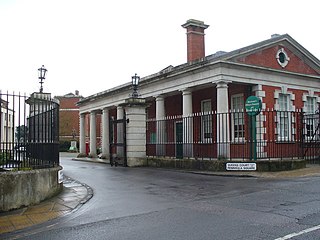
The Adjutant General's Corps Museum, also known as The AGC Museum is a visitor attraction at Peninsula Barracks in Winchester. It displays the history of the Adjutant General's Corps and its antecedents through objects, text, photographs, and dioramas.
The following is a hierarchical outline for the structure of the British Army in 1989. The most authoritative source for this type of information available is Ministry of Defence, Master Order of Battle, and United Kingdom Land Forces, HQ UKLF, UKLF ORBAT Review Action Plan, HQ UKLF, 1990.
References
- ↑ "Winchester's Military Museums". Winchester Military Quarter. Retrieved 15 September 2021.